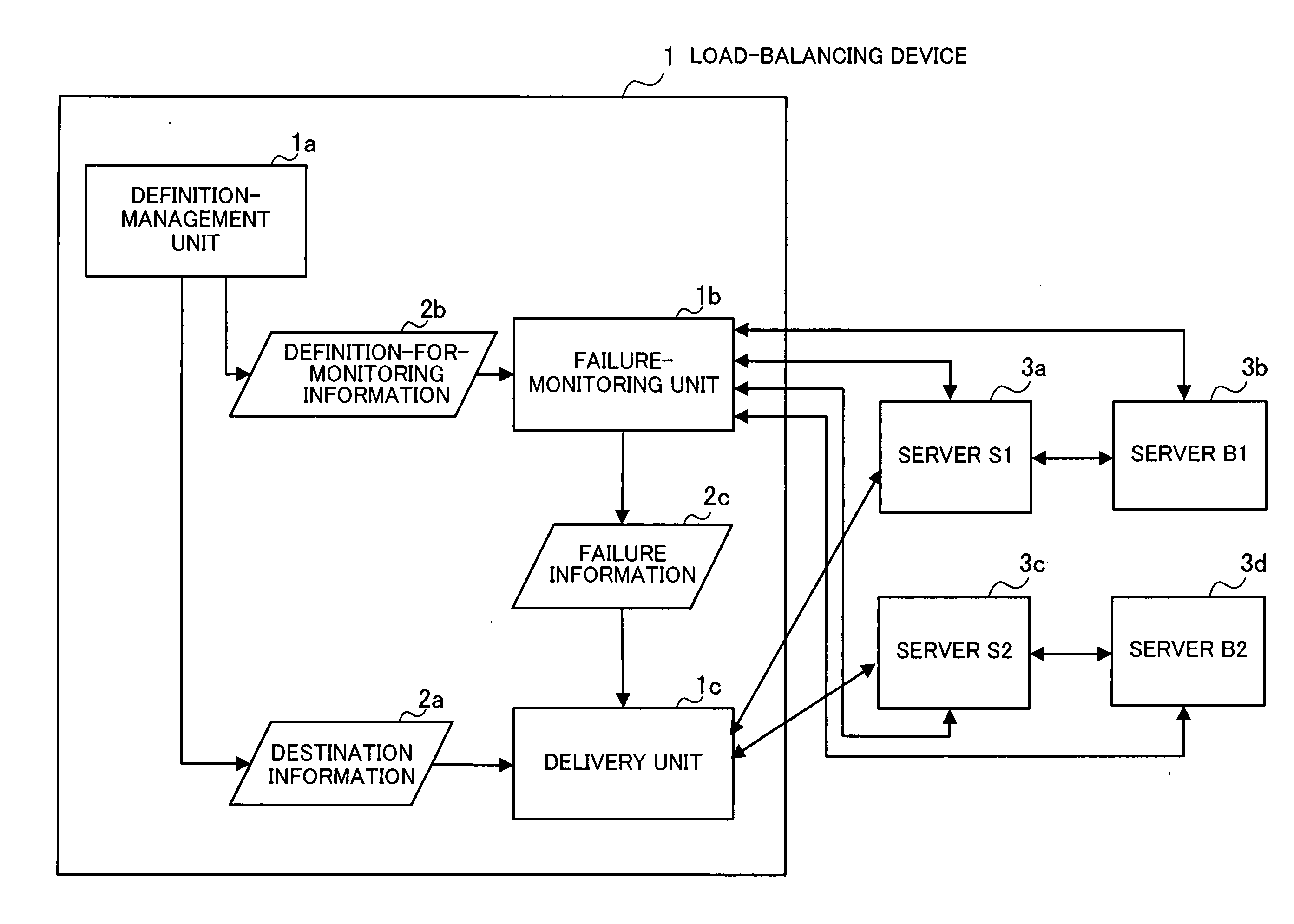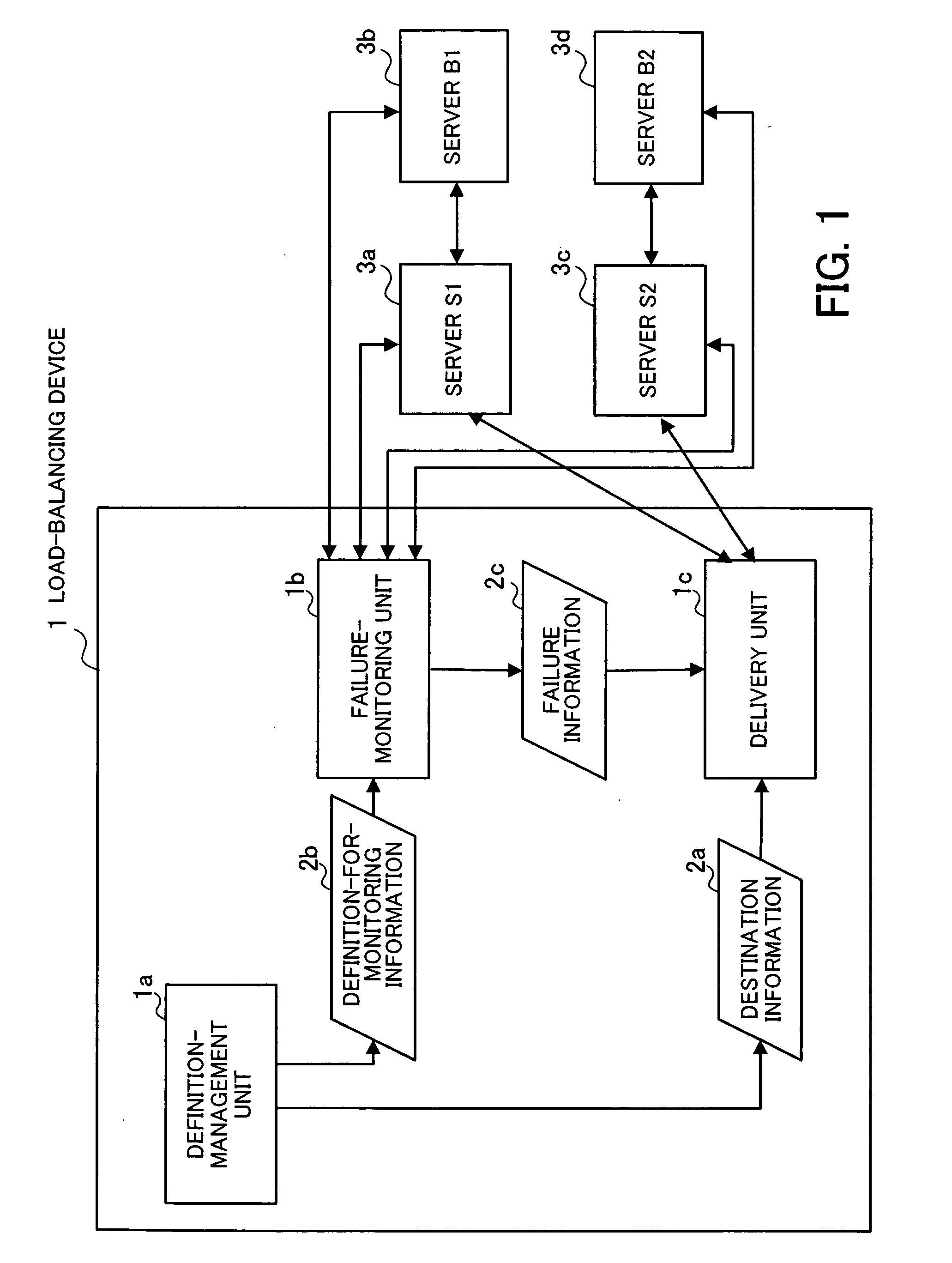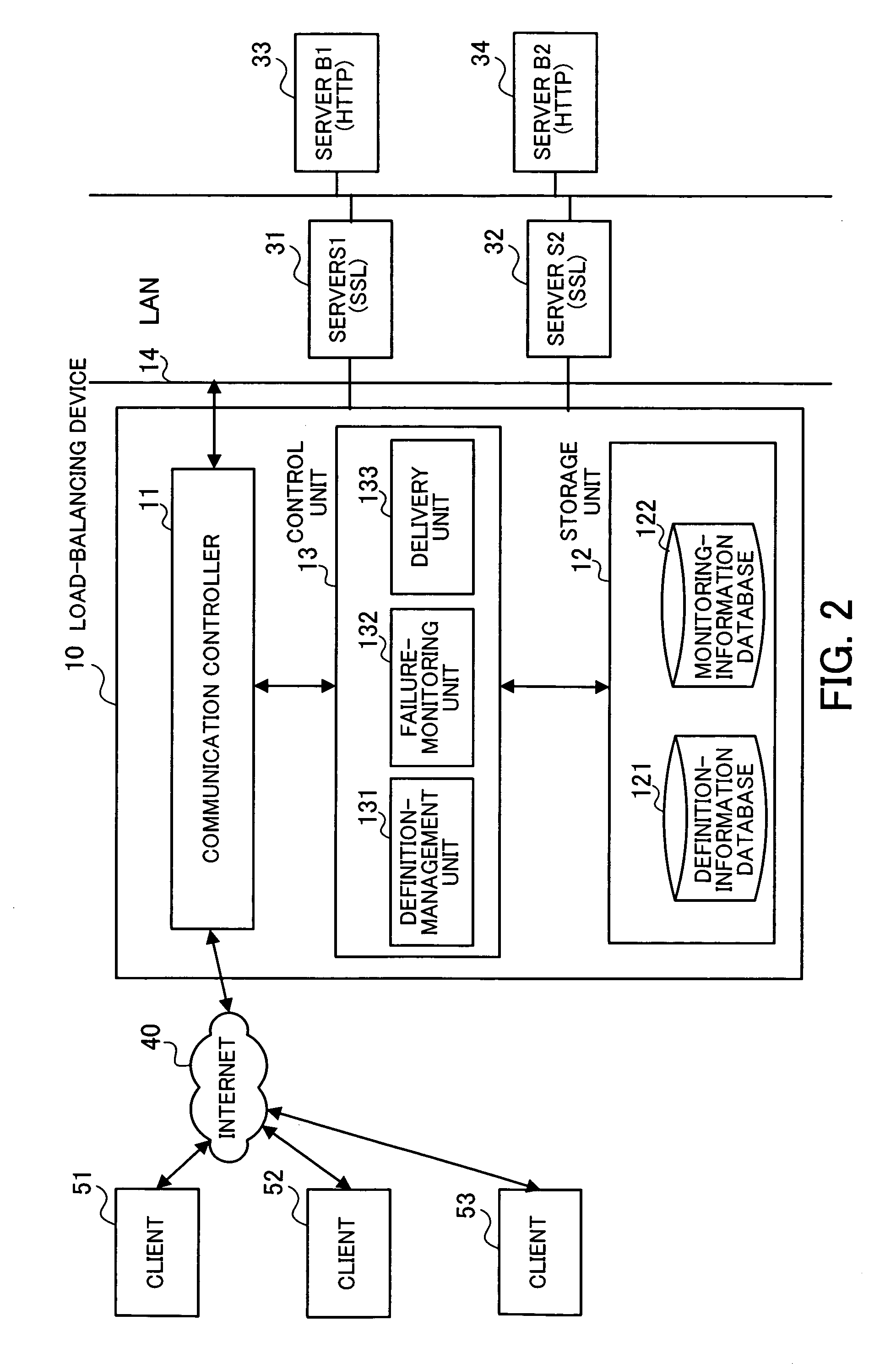Failure-monitoring program and load-balancing device
a failure monitoring and load-balancing technology, applied in multi-programming arrangements, instruments, data switching networks, etc., can solve problems such as failure in a server to which packets are to be delivered, and failure of the server located behind the destination server
- Summary
- Abstract
- Description
- Claims
- Application Information
AI Technical Summary
Benefits of technology
Problems solved by technology
Method used
Image
Examples
Embodiment Construction
[0035] The embodiment of the present invention is explained below with reference to drawings.
Outline of the Present Invention
[0036] First, an outline of the present invention which is realized in the embodiment is indicated, and thereafter details of the embodiment are explained.
[0037]FIG. 1 is a conceptual diagram illustrating the present invention which is realized in the embodiment. The load-balancing device 1 according to the present invention comprises a definition-management unit 1a, a failure-monitoring unit 1b, and a delivery unit 1c. When request packets from clients (not shown) are inputted into the load-balancing device 1, the load-balancing device 1 distributes the request packets among servers so as to balance the load imposed on the servers.
[0038] In the configuration of FIG. 1, the combination of the server S1 (3a) and the server B1 (3b) realizes a predetermined processing function, i.e., the server S1 (3a) and the server B1 (3b) cooperate to realize the predeter...
PUM
 Login to View More
Login to View More Abstract
Description
Claims
Application Information
 Login to View More
Login to View More - R&D
- Intellectual Property
- Life Sciences
- Materials
- Tech Scout
- Unparalleled Data Quality
- Higher Quality Content
- 60% Fewer Hallucinations
Browse by: Latest US Patents, China's latest patents, Technical Efficacy Thesaurus, Application Domain, Technology Topic, Popular Technical Reports.
© 2025 PatSnap. All rights reserved.Legal|Privacy policy|Modern Slavery Act Transparency Statement|Sitemap|About US| Contact US: help@patsnap.com



